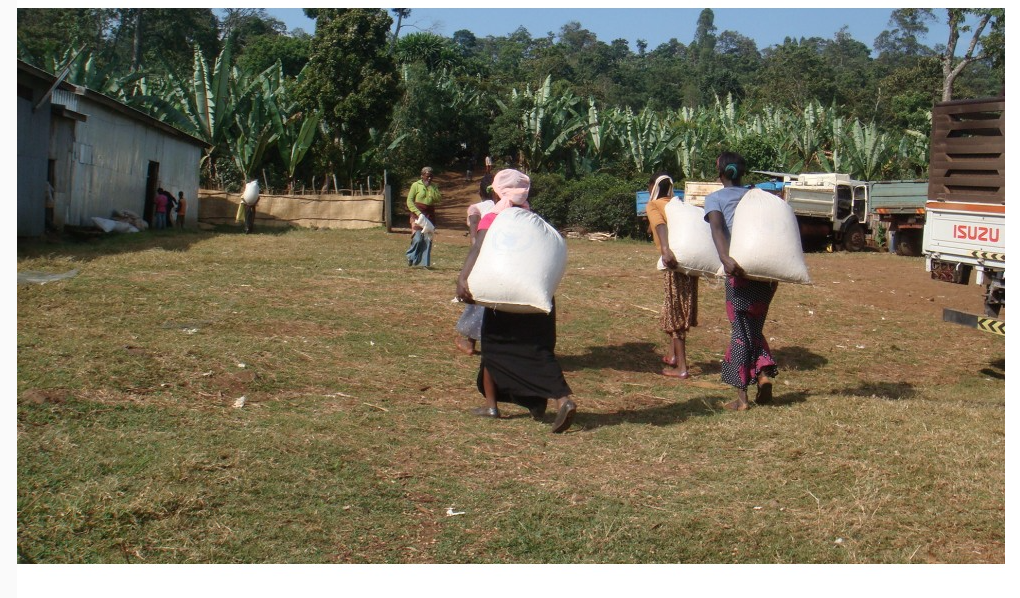 I am addicted to coffee! I know I can quit. I did during both of my pregnancies, yet I find such delight in my morning cup. Coffee improves my quality of life, but what about the quality of life of those growing my beans?
I am addicted to coffee! I know I can quit. I did during both of my pregnancies, yet I find such delight in my morning cup. Coffee improves my quality of life, but what about the quality of life of those growing my beans?
Coffee can’t be grown in my climate. There are plenty of local roasters, but the bean itself is not local. I may skip other non-local food items and eat seasonally, but coffee is my exception.
Coffee is a tropical plant. Unfortunately, coffee production in these regions involve forced and child labor. Verite reports:
According to the U.S. Department of Labor (2012) coffee is produced with forced labor in Côte D’Ivoire (CDI) and with child labor in Colombia, CDI, Dominican Republic, Guatemala, Guinea, Honduras, El Salvador, Kenya, Mexico, Nicaragua, Panama, Sierra Leone, Tanzania, and Uganda. Other reports have found forced labor throughout Latin America, particularly in those countries that the Department of Labor has identified as using child labor…One of the root causes of forced and child labor in coffee is the low prices and lack of price stability for farmers.
Similar to Farm to School or Farm to Plate programs, Farm 2 Cup is an organization that allows you to trace each bag of coffee back to the farm started by Denver-based Coda Coffee.
Through the program, Coda Coffee invests money and works directly with farmers, who then reinvest in their coffee and community. Coda Coffee expects Farm2Cup participants to use the funds they receive for research, development, experimentation, best practice sharing and sometimes inner-village or cross-community competitions to improve coffee quality. The program also requires farmers to give back to their local community.
Farm2Cup can drastically impact the livelihood of the farmer’s family, employees and even an entire village. Coda Coffee works with farmers around the world, in countries such as Guatemala, Ethiopia, Brazil and Honduras. Some examples of how the funds have helped farmers and communities include:
-
El Salvador: Coda Coffee held fundraisers for a school in Ayutepecque, which funded a new kitchen, utensils, desks and chairs for the children. Additionally, the community is working on plans for a school library.
-
Guatemala: In Guatemala, Coda purchases high quality micro lots of coffee to encourage overall product improvement. The community has also held cupping competitions, where the local coffee farmers come together to have their coffee graded. The premium that Coda Coffee pays for the best coffee has helped build a road to Aachimbal, a school, church, community center and 80 homes with electricity and running water.
-
Las Capucas, Honduras: Cupping competitions in Honduras also helped improve coffee quality, which increased the coffee’s price and allowed one community to build cupping labs, a wet mill and a dry mill.
I already feel guilty my coffee cannot be grown locally. I don’t need the added karma of child labor, thus it is super important to be an informed consumer.
We were sent coda [amazon_link id=”B00MJAKBDU” target=”_blank” ]Ethiopia Yirgacheffe Zero, Coda Coffee[/amazon_link]. Unfortunately the variety we were sent is not organic, but Coda Coffee does have some organic coffees.
I love how the label clearly states the origin, elevation, bean type, tasting notes, and profile of the coffee. 60% of waste is diverted from landfills in the production of this coffee by using recycling and composting. Furthermore, local communities are supported and children are not forced to work in its production.
Child labor is a big problem in Ethiopia, as it is in other coffee growing regions. According to the United States Department of Labor 2013 Findings on the Worst Forms of Child Labor:
I. Prevalence and Sectoral Distribution of Child Labor
Children in Ethiopia are engaged in child labor in agriculture and in the worst forms of child labor in domestic service.(1-4) Data from the Government’s 2011 Demographic and Health Survey (DHS) show that most children work for a family business. In addition, DHS data indicates that the percentages of child labor are higher among males and in rural areas.(5) Table 1 provides key indicators on children’s work and education in Ethiopia.
Table 1. Statistics on Children’s Work and Education Working children, ages 5 to 14 (% and population): 22.0 (5,545,319) School attendance, ages 5 to 14 (%): 54.0 Children combining work and school, ages 7 to 14 (%): 17.0 Primary completion rate (%): 43.4 Source for primary completion rate: Data from 2005, published by UNESCO Institute for Statistics, 2014. (6)
Source for all other data: Understanding Children’s Work Project’s analysis of statistics from Demographic and Health Survey, 2011. (7)
Know where your coffee comes from to make sure you are not unknowingly supporting child labor!
[amazon_enhanced asin=”B00MJAKBDU” /][amazon_enhanced asin=”B00MJ797U6″ /][amazon_enhanced asin=”B00MM496MK” /][amazon_enhanced asin=”B00MM6QZ4K” /]
Leave a Reply